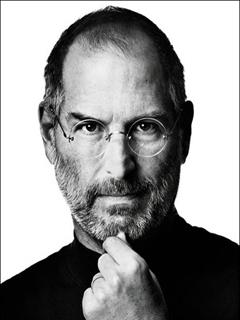Thursday, 3 January 2013
Who Invented Paper
Cai Lun (ca. 50 AD – 121), courtesy name Jingzhong, was a Chinese eunuch. He is traditionally regarded as the inventor of paper and the papermaking process, in forms recognizable in modern times as paper (as opposed to Egyptian papyrus). Although paper existed in China before Cai Lun (since the 2nd century BC), he was responsible for the first significant improvement and standardization of paper-making by adding essential new materials into its composition.
Paper is a thin material mainly used for writing upon, printing upon, drawing or for packaging. It is produced by pressing together moist fibers, typically cellulose pulp derived from wood, rags or grasses, and drying them into flexible sheets.
Paper is a versatile material with many uses. Whilst the most common is for writing and printing upon, it is also widely used as a packaging material, in many cleaning products, in a number of industrial and construction processes, and even as a food ingredient – particularly in Asian cultures.
Monday, 31 December 2012
Who Invented iPod
Steven Paul Jobs was an American entrepreneur. He is best known as the co-founder, chairman, and CEO of Apple Inc. Through Apple, he was widely recognized as a charismatic pioneer of the personal computer revolution and for his influential career in the computer and consumer electronics fields. Jobs also co-founded and served as chief executive of Pixar Animation Studios; he became a member of the board of directors of The Walt Disney Company in 2006, when Disney acquired Pixar.
The iPod is a line of portable media players designed and marketed by Apple Inc. The first line was released on November 10, 2001, its most recent redesigns announced on September 12, 2012. There are four current versions of the iPod: the ultra-compact iPod Shuffle, the compact iPod Nano, the touchscreen iPod Touch, and the hard drive-based iPod Classic.
Friday, 28 December 2012
Who Invented Dynamite
Alfred Bernhard Nobel About this sound listen (21 October 1833 – 10 December 1896) was a Swedish chemist, engineer, innovator, and armaments manufacturer. He was the inventor of dynamite. Nobel also owned Bofors, which he had redirected from its previous role as primarily an iron and steel producer to a major manufacturer of cannon and other armaments. Nobel held 350 different patents, dynamite being the most famous. He used his fortune to posthumously institute the Nobel Prizes. The synthetic element nobelium was named after him. His name also survives in modern-day companies such as Dynamit Nobel and Akzo Nobel, which are descendants of the companies Nobel himself established.
Dynamite is an explosive material based on the nitroglycerin, initially using diatomaceous earth, or another absorbent substance such as powdered shells, clay, sawdust, or wood pulp. Dynamites using organic materials such as sawdust are less stable and such use has been generally discontinued.
Thursday, 27 December 2012
Who Invented Revolver
Samuel Colt (July 19, 1814 – January 10, 1862) was an American inventor and industrialist from Hartford, Connecticut. He was the founder of Colt's Patent Fire-Arms Manufacturing Company (now known as Colt's Manufacturing Company), and made the mass-production of the revolver commercially viable for the first time.
Elisha Haydon Collier (1788–1856) of Boston invented a flintlock revolver around 1814. His weapon is one of the earliest true revolvers, in contrast to the earlier pepperboxes which were cumbersome and inaccurate multi-barreled guns prone to misfires, or even exploding. In addition to being single-action, Collier's revolver was self-priming: a compartment automatically released gunpowder into the pan when the hammer was cocked.
A revolver or six-shooter (as most revolvers have a maximum capacity of six rounds) is a repeating firearm that has a cylinder containing multiple chambers and at least one barrel for firing. The first true revolver—a flintlock—was made by Elisha Collier in 1814. The percussion cap revolver was invented by Samuel Colt in 1836. This weapon became known as the Colt Paterson. The first cartridge revolvers were produced around 1856 by Smith & Wesson. Though the original name was "revolving gun", the short-form "revolver" is universally used.
Wednesday, 26 December 2012
Who Invented Phonograph
Thomas Alva Edison Inventor of Phonograph
Thomas Alva Edison (February 11, 1847 – October 18, 1931) was an American inventor and businessman. He developed many devices that greatly influenced life around the world, including the phonograph, the motion picture camera, and a long-lasting, practical electric light bulb. Dubbed "The Wizard of Menlo Park" by a newspaper reporter, he was one of the first inventors to apply the principles of mass production and large-scale teamwork to the process of invention, and because of that, he is often credited with the creation of the first industrial research laboratory.
The phonograph, record player, or gramophone is a device introduced in 1877 for the recording and reproduction of sound recordings. The recordings played on such a device generally consist of wavy lines that are either scratched, engraved, or grooved onto a rotating cylinder or disc. As the cylinder or disc rotates, a stylus or needle traces the wavy lines and vibrates to reproduce the recorded sound waves.
Tuesday, 25 December 2012
Who Invented Bubblegum
Bubble gum inventor Walter E. Diemer (January 8, 1904—January 9, 1998)
Walter E. Diemer - Born and raised in Philadelphia, Pennsylvania, Diemer was working as an accountant at Fleer in 1926 when the company president sought to cut costs by making their own gum base. The company's founder, Frank Henry Fleer, had previously made a batch of bubble gum in 1906 which he called "Blibber Blubber", but it was too sticky and easily broke.
Bubblegum is a type of chewing gum, designed to be inflated out of the mouth as a bubble. As with chewing gum, the product is made from chicle and is available in various flavors.
Sunday, 23 December 2012
Who Invented Iron Box
Henry W. Seeley
The electric iron was invented in 1882 by Henry W. Seeley, a New York inventor. Seeley patented his "electric flatiron" on June 6, 1882. His iron weighed almost 15 pounds and took a long time to warm up.
A clothing iron, also called a flatiron or simply an iron, is a small appliance: a handheld piece of equipment with a flat, roughly triangular surface that, when heated, is used to press clothes to remove creases. It is named for the metal of which the device is commonly made, and the use of it is generally called ironing. Ironing works by loosening the ties between the long chains of molecules that exist in polymer fiber materials. With the heat and the weight of the ironing plate, the fibers are stretched and the fabric maintains its new shape when cool. Some materials, such as cotton, require the use of water to loosen the intermolecular bonds. Many materials developed in the twentieth century are advertised as needing little or no ironing.
Saturday, 22 December 2012
Who Invented Java
Dr. James A. Gosling
Dr. James A. Gosling, OC (born May 19, 1955 near Calgary, Alberta, Canada) is a Canadian computer scientist, best known as the father of the Java programming language.
Javais a programming language originally developed by James Gosling at Sun Microsystems (which has since merged into Oracle Corporation) and released in 1995 as a core component of Sun Microsystems' Java platform. The language derives much of its syntax from C and C++, but it has fewer low-level facilities than either of them. Java applications are typically compiled to bytecode (class file) that can run on any Java virtual machine (JVM) regardless of computer architecture. Java is a general-purpose, concurrent, class-based, object-oriented language that is specifically designed to have as few implementation dependencies as possible.
Who invented C programming language
Dennis Ritchie between 1969 and 1973 at AT&T Bell Labs
Dennis MacAlistair Ritchie (born September 9, 1941; found dead October 12, 2011)was an American computer scientist who "helped shape the digital era."He created the C programming language and, with long-time colleague Ken Thompson, the Unix operating system. Ritchie and Thompson received the Turing Award from the ACM in 1983, the Hamming Medal from the IEEE in 1990 and the National Medal of Technology from President Clinton in 1999. Ritchie was the head of Lucent Technologies System Software Research Department when he retired in 2007.
C (like the letter C) is a general-purpose programming language initially developed by Dennis Ritchie between 1969 and 1973 at AT&T Bell Labs. Its design provides constructs that map efficiently to typical machine instructions, and therefore it found lasting use in applications that had formerly been coded in assembly language, most notably system software like the Unix computer operating system.
Friday, 21 December 2012
Who invented PHP
Rasmus Lerdorf in 1995
Rasmus Lerdorf (born 22 November 1968 in Qeqertarsuaq, Greenland) is a Danish programmer with Canadian citizenship. He is best known for creating the PHP scripting language, authoring the first two versions of the language and participating in the development of later versions led by a group of developers including Jim Winstead (who later created blo.gs), Stig Bakken, Shane Caraveo, Andi Gutmans and Zeev Suraski. He continues to contribute to the project.
PHP is an open source general-purpose server-side scripting language originally designed for Web development to produce dynamic Web pages. It is one of the first developed server-side scripting languages to be embedded into an HTML source document rather than calling an external file to process data. The code is interpreted by a Web server with a PHP processor module which generates the resulting Web page.
Subscribe to:
Comments (Atom)



















